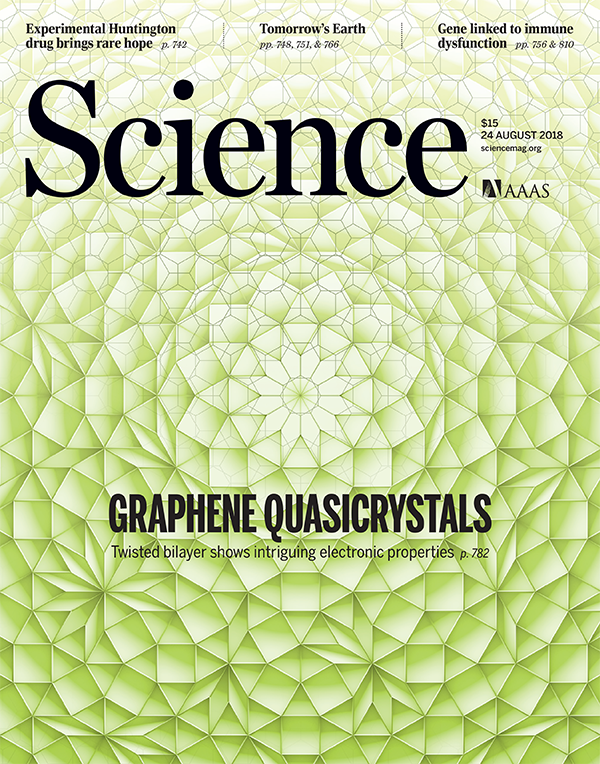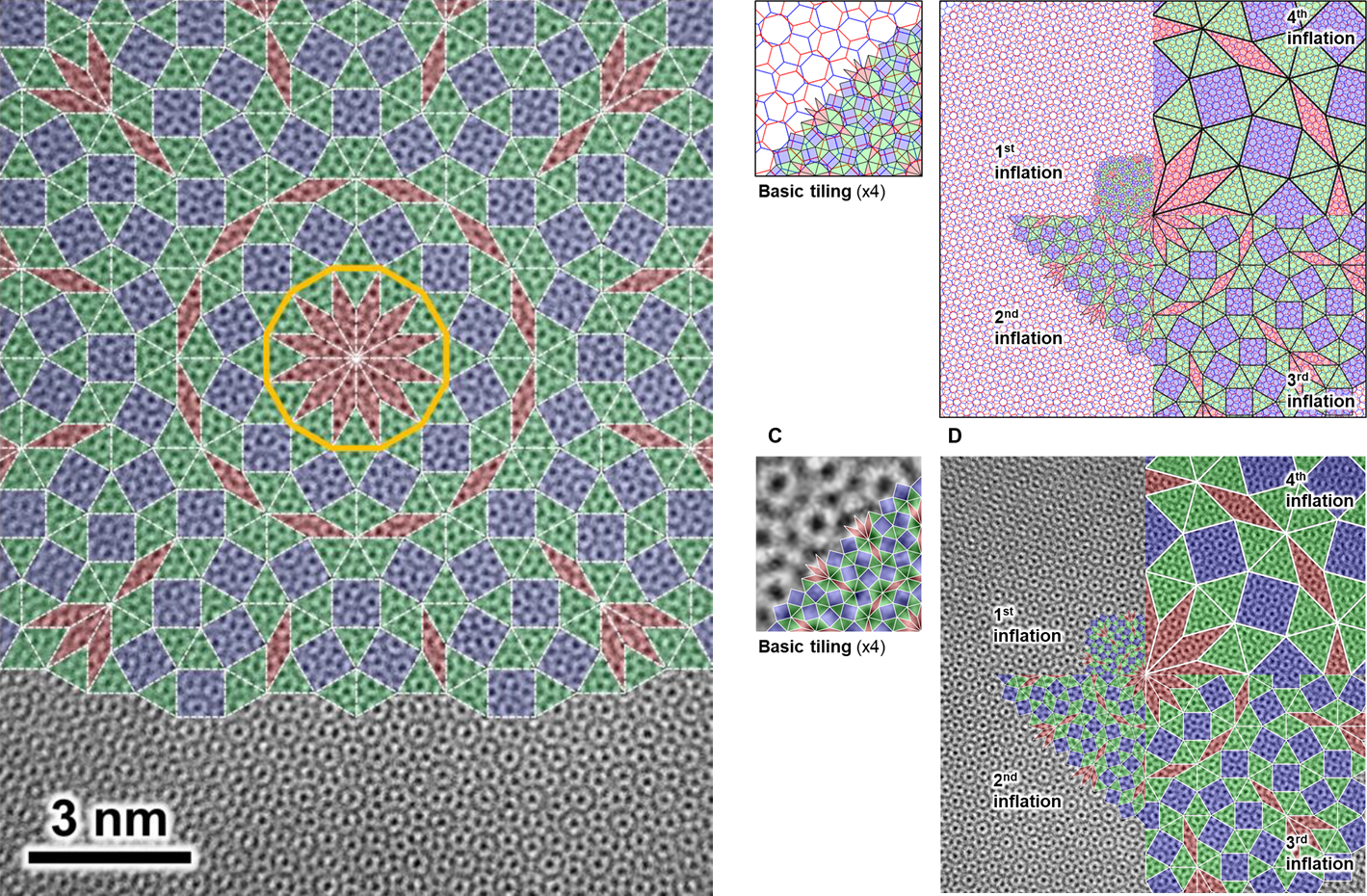Nov 08 2018
Published by
NYU Shanghai

Pilkyung Moon, an assistant professor of physics and a member of the NYU-ECNU Institute of Physics at NYU Shanghai, working in collaboration with a research group from Sungkyunkwan University, have succeeded in creating a new kind of quasicrystal. In research featured on the cover of Science, Moon and his colleagues reported that a new kind of quasicrystal can be designed by the overlay of two periodic layers at a specific configuration.
| The research was selected as the cover article for a recent issue of the Science journal. Credit: August 24 2018 cover of Science. Reprinted with permission from AAAS. |
Solid-state materials are composed of atoms. For a long time, it had been believed that periodicity is essential to arrange atoms in an ordered fashion, and such arrangement was named a crystal. In a two-dimensional space, for example, only a few arrangement patterns, i.e., triangular, rectangular, or hexagonal arrangement, can tile space without vacancy in a periodic manner [Figs. 1(a) and 1(b)].
In 1970s and ’80s, however, researchers discovered very rare patterns which can tile space in an ordered but not periodic fashion [Fig. 1(c)]. Such novel arrangement was newly named a quasicrystal, and has greatly expanded our understanding of the atomic order. However, quasicrystals are quite rare in nature.
Professor Joung Real Ahn’s group in Sungkyunkwan University developed an innovative idea to grow two hexagonal (graphene) layers at exactly 30°, and measured various physical properties.
Professor Moon's theoretical calculation proved that the scattering pattern observed in the experiment can appear only at exactly 30°, and even a slight deviation of the angle (e.g., 29.958°) cannot reproduce the observed pattern (Fig.2). This result provides solid evidence of the fact that the research team’s system is at quasicrystalline configuration. In addition, the theoretical investigation also revealed many exotic features of quasicrystals such as the emergence of infinitely many Dirac cone replicas as well as the unusually strong scattering.
The discovery of this new kind of designer quasicrystal will expand knowledge about atomic order by enabling the systematic studies on the structures lying between periodic systems and non-periodic systems. Research findings in this study will enable scientists to build a theoretical model that can describe the physical properties of this novel structure without relying on the approximations used in the conventional quasicrystal research.
Figure 1: Tiling of space by (a) triangular, rectangular, and hexagonal tile, (b) pentagonal tile, and (c) pentagonal Penrose tile. Note that the pattern in (b) cannot tile the space without vacancy.
Figure 2: Transmission electron microscopy image and theoretical tiling of the graphene quasicrystal.
Journal Reference:
Sung Joon Ahn, Pilkyung Moon, Tae-Hoon Kim, Hyun-Woo Kim, Ha-Chul Shin, Eun Hye Kim, Hyun Woo Cha, Se-Jong Kahng, Philip Kim, Mikito Koshino, Young-Woo Son, Cheol-Woong Yang, Joung Real Ahn, “Dirac Electrons in a Dodecagonal Graphene Quasicrystal”, Science, doi: 10.1126/science.aar8412 (2018)
Terms and Conditions for Use of Electronic Products: Readers may view, browse, and/or download material for temporary copying purposes only, provided these uses are for noncommercial personal purposes. Except as provided by law, this material may not be further reproduced, distributed, transmitted, modified, adapted, performed, displayed, published, or sold in whole or in part, without prior written permission from the publisher.





